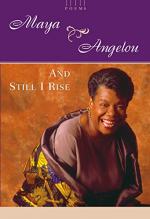
|
| Name: _________________________ | Period: ___________________ |
This test consists of 15 multiple choice questions and 5 short answer questions.
Multiple Choice Questions
1. In the final quatrain, what does the speaker wonder about upsetting "you" with?
(a) Intelligence.
(b) Beauty.
(c) Kindness.
(d) Sexiness.
2. What is the rhyme scheme of the first seven stanzas?
(a) ABAC.
(b) ABCB.
(c) ABBA.
(d) ABAB.
3. What technique is used in line 29, "Out of the huts of history’s shame"?
(a) Allegory.
(b) Oxymoron.
(c) Juxtaposition.
(d) Allusion.
4. How does the speaker characterize herself in line 4?
(a) Lighthearted and silly.
(b) Brave and perseverent.
(c) Intelligent and curious.
(d) Lively and confident.
5. Which is the most logical description of who "You" is in line 1?
(a) A romantic partner.
(b) Scholars and critics.
(c) An unnamed oppressor.
(d) People of the past.
6. Which is the first stanza of the poem that is longer than four lines?
(a) 7.
(b) 9.
(c) 6.
(d) 8.
7. In line 17, what kind of a person is described by the word "haughtiness"?
(a) Mean-spirited and petty.
(b) Arrogant and proud.
(c) Sneaky and dishonest.
(d) Strange and eccentric.
8. What words create a refrain in the final two stanzas of the poem?
(a) "Again I rise."
(b) "Still I rise."
(c) "I rise."
(d) "I rise and rise."
9. Who is the author of "Still I Rise"?
(a) Maya Angelou.
(b) Toni Morrison.
(c) Nikki Giovanni.
(d) Alice Walker.
10. What technique does the first line of the poem, "You may write me down in history," introduce?
(a) Verbal irony.
(b) Catalog.
(c) Allegory.
(d) Apostrophe.
11. Which technique is frequently used at the beginnings of stanzas?
(a) Onomatopoeia.
(b) Cacophony.
(c) Rhetorical question.
(d) Internal rhyme.
12. What kind of "certainty" does the speaker claim to have in line 10?
(a) The "certainty of history."
(b) The "certainty of air."
(c) The "certainty of springtime."
(d) The "certainty of tides."
13. What is the primary quality that the speaker's stanza eight description of a body of water is intended to convey?
(a) Power.
(b) Persistence.
(c) Endurance.
(d) Independence.
14. What technique is used in line 21, "You may shoot me with your words"?
(a) Metaphor.
(b) Kenning.
(c) Simile.
(d) Innuendo.
15. Which is the best definition of "beset" in line 6?
(a) Troubled.
(b) Decorated.
(c) Cradled.
(d) Inspired.
Short Answer Questions
1. In the fourth stanza, what kind of person does the speaker ask if "you" want her to be?
2. Which two things does the final stanza use to represent the past and present?
3. What body of water does the speaker claim to be in the eighth stanza?
4. What technique is used in lines 7 and 8, "’Cause I walk like I've got oil wells/ Pumping in my living room"?
5. Where does the speaker say she obtained her gifts?
|
This section contains 426 words (approx. 2 pages at 300 words per page) |

|




